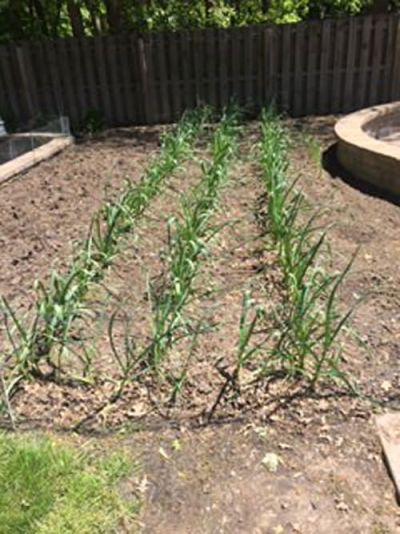Spring has finally arrived in Northeast Ohio. We have not only navigated winter with the usual ice, snow and cold, but hopefully survived the deadly COVID-19 pandemic. Everyone’s life has been disrupted by this pandemic. Our daily lives have changed; from wearing masks and disinfecting everything, to job losses, isolation from family and friends, school and church closings, businesses totally shut down, food and supply shortages, and much sickness and death.
Then, finally, spring arrived. Beautiful, lovely, sweet Primavera! The pandemic cannot stop the eternal changing of the seasons. Not only did this winter seem extra harsh, most likely because of the extenuating circumstances, but this spring also seems different. It started out dry and warm but then turned cold and rainy.
In our Italian American community, those of us who tend gardens look forward with excitement to spring and signs of life in our rows of garlic that were planted around Columbus Day in October. This winter, through the snow falls and snow thaws, I could see the garlic crop slowly emerging from the mulch. It warmed my heart knowing that soon there would be a new crop of garlic and hopefully life would start to return to normal.
One of the first crops of the year to be harvested for some of us, garlic is the most important. It would be unthinkable, perhaps sacrilegious to not have fresh garlic from the garden to cook with. Worse yet if we had to go to a store to buy garlic imported from a foreign country!
This past winter with the pandemic raging, many of us took solace in our comfort foods and the garlic that not only flavored dishes but nourished our bodies and soothed our souls. My grandfather, Michelangelo Pietraroia, told the story on how he survived the 1918 Pandemic by eating an abundance of garlic and onions. I am not sure how true it is, but I am sure it may have helped.
In early June, about six weeks before harvest, a much-anticipated phase of garlic growing happens, when the seed pod of the garlic plant emerges. These tender shoots are called garlic scapes. Tender in texture and mild in flavor, they are used in salads and soups, omelets and other savory dishes. In my garden, the plump stems indicate that there will be large garlic bulbs beneath the mulch, bulbs that will be used to flavor our sauces and other favorite dishes.
When it is time to harvest the garlic bulbs, the first three leaves from the ground up will turn brown and die. This is an indication the garlic is ready to harvest. Use a four-pronged pitchfork to remove the bulbs from the soil to keep from damaging them. Wash the bulbs, lay out to dry for several hours, tie them in bundles of 12, and hang them in a cool, dry place in the basement to cure for a week.
When the bulbs are ready for sorting, the stalks will be pliable enough to braid. Save the larger bulbs for your seed stock to be planted a clove at a time in the fall. The remaining large and medium bulbs can be braided for use in the cucina. Use the smaller bulbs for dehydrating into garlic powder.
To dehydrate, separate the bulbs into individual cloves, place on a cookie sheet, set the oven temperature at its lowest setting, and dry them for about 6 to 8 hours. Remove from the oven and let cool overnight. Remove the garlic skins by rolling the cloves between your palms and remove the loose skins from the cookie sheet. When the cloves are rock hard, set aside and repeat the process until all cloves are dried. Place dried cloves into a food processor and use the grind setting to turn them into powder. Place the powder in a glass jar when the cloves are sufficiently ground. The garlic powder will keep nicely for over a year. I have found this method is the best way to store garlic for the long term. Now you can enjoy the best garlic powder you will ever taste! Amore.



